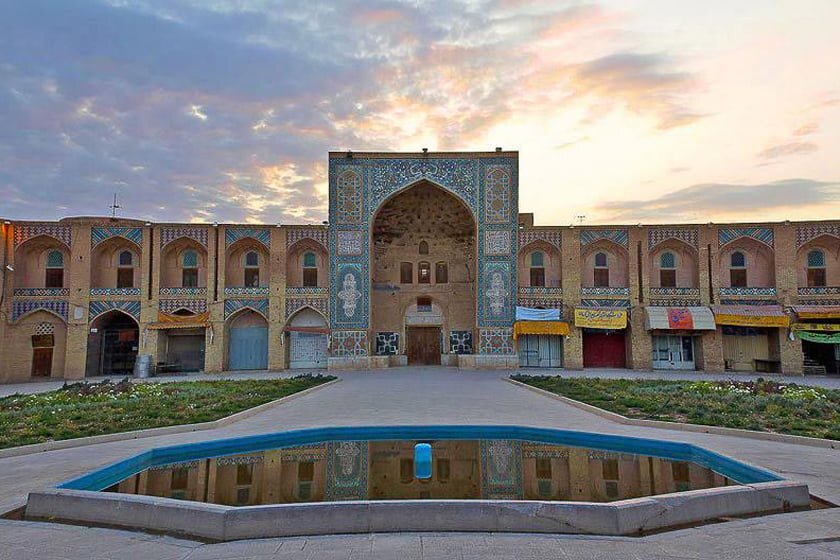Iran submits dossier to UNESCO for listing Safavid-era Ganjali Khan Caravanserai

TEHRAN – Iran has recently submitted a dossier to the United Nations Educational, Scientific, and Cultural Organization for a possible inscription of the Safavid-era (1501–1736) Ganjali Khan Caravanserai, which is located in the southeastern Kerman province.
The documentation of the caravanserai has been completed and it is expected to gain UNESCO tag along with some other historical caravanserais, IRNA quoted deputy provincial tourism chief Mojtaba Shafiei as saying on Saturday.
The historical caravanserais across the province hold the potential to boost tourism in the region and most of them are ceded to the private sector to be protected and preserved more properly, the official added.
Ganjali Khan Caravanserai, which was inscribed on the National Heritage list in 1937, is a part of a bigger historical complex that includes a mosque, school, bathhouse, bazaar, and cistern.
Caravanserai is a compound word combining “caravan” with “sara”. The first stand for a group of travelers and Sara means the building.
They often had massive portals supported by elevated load-bearing walls. Guest rooms were constructed around the courtyard and stables behind them with doors in the corners of the yard.
Iran’s earliest caravanserais were built during the Achaemenid era (550 -330 BC). Centuries later, when Shah Abbas I assumed power from 1588 – to 1629; he ordered the construction of network caravanserais across the country.
Such roadside inns were originally built in various epochs along ancient caravan routes in the Muslim world to shelter people, their goods, and animals. The former Silk Roads may be the most famous example dotted by caravanserais.
For many travelers to Iran, staying in or even visiting a centuries-old caravanserai can be a wide experience as they have an opportunity to feel the past, a time travel back into a forgotten age.
Iran ranks 10th in the world in terms of the number of historical monuments and sites registered on the UNESCO World Heritage list.
Before the Islamic Revolution, Persepolis, Naghsh-e Jahan Square, and Choghaznabil were the only three UNESCO-listed monuments, but today the number has been increased this number to 24 historical sites, of which “Arg-e Bam” (Bam Citadel) that represents an outstanding example of an ancient fortified settlement, is located in Kerman province.
“Bisotun” in western Kermanshah province, which is notable for its Achaemenid-era inscription carved on a limestone cliff, lavish “Golestan Palace” in downtown Tehran which is a masterpiece of the Qajar era (1789 to 1925), and millennium-old “Gonbad-e Qabus” which is a mudbrick tomb tower for Qabus ibn Wushmagir, are among the other UNESCO-designated sites in Iran.
ABU/MG
Leave a Comment